“Been in America”: Interviews with German researchers in the USA and Canada
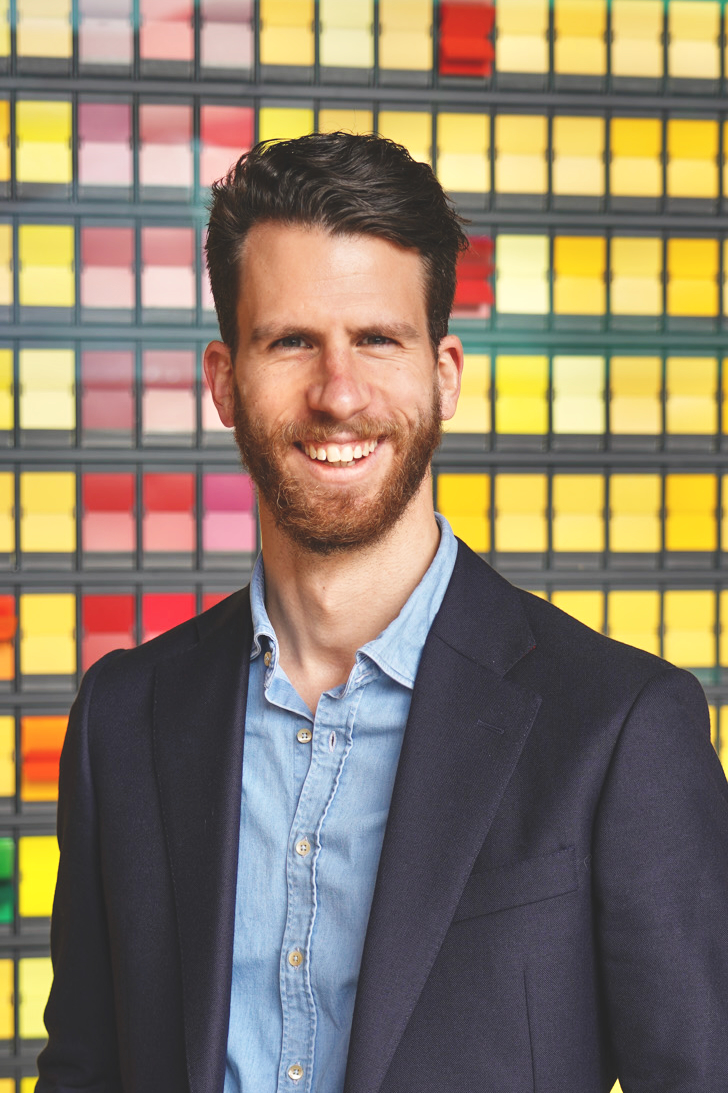
Nikolaus Jahn
© Privat
(08/23/22) Through its research fellowship program and Walter Benjamin Fellowship, the DFG supports early-career academics by funding an independent research project abroad or in Germany. A large proportion of these fellowships are awarded in the USA and (to a lesser extent) in Canada, reflecting the belief still prevalent in many disciplines – and in the life sciences in particular – that for a career in research it is helpful to have “been in America.” In a series of talks, we aim to give you an impression of the wide range of DFG funding recipients. In this edition we take a look at who is behind funding number JA 3110.
DFG: Dr. Jahn, thank you so much for taking the time to talk to the DFG’s North American office. Your DFG reference number sounds decidedly positive – the first two letters of your surname are German for “yes”; your first name, Nikolaus, could give rise to certain expectations on 6 December, at least in Catholic areas; and your curriculum vitae says you acquired your school-leaving certificate at the Jesuit-run secondary school St. Blasien in the Black Forest. Do enlighten us.
Nicholas Jahn (NJ): Thank you very much for this opportunity to talk to you and especially for my funding, which is currently enabling me to take great steps forward scientifically here on the US’s West Coast and is also enriching me beyond academia. I wasn’t aware of the reference number – thank you for pointing it out! But that wasn't the reason I was drawn to the West Coast, probably – if you’ll excuse the funny superlative – the “most positive” region in the Western world.
I don’t really know why my parents called me Nikolaus, but I suspect the simplest explanation is the most obvious: they found the name very appealing, without attaching any deeper significance to it - though perhaps it was in recognition of the Bishop of Myra. In any case, my first name didn’t always make life easy for me in the milieu of my childhood and youth, as you can imagine. But I’ve long since forgotten all the jokes and have now come to really appreciate my name.
Yes, the College of St. Blasien is indeed rather unusual, especially since it’s a boarding school. My father was a student there many years ago, and his experience there left such a lasting impression on him that after the first four years of upper secondary school in Munich, my parents and I decided that I should go there to get the best possible education. I’m very grateful to them for that.
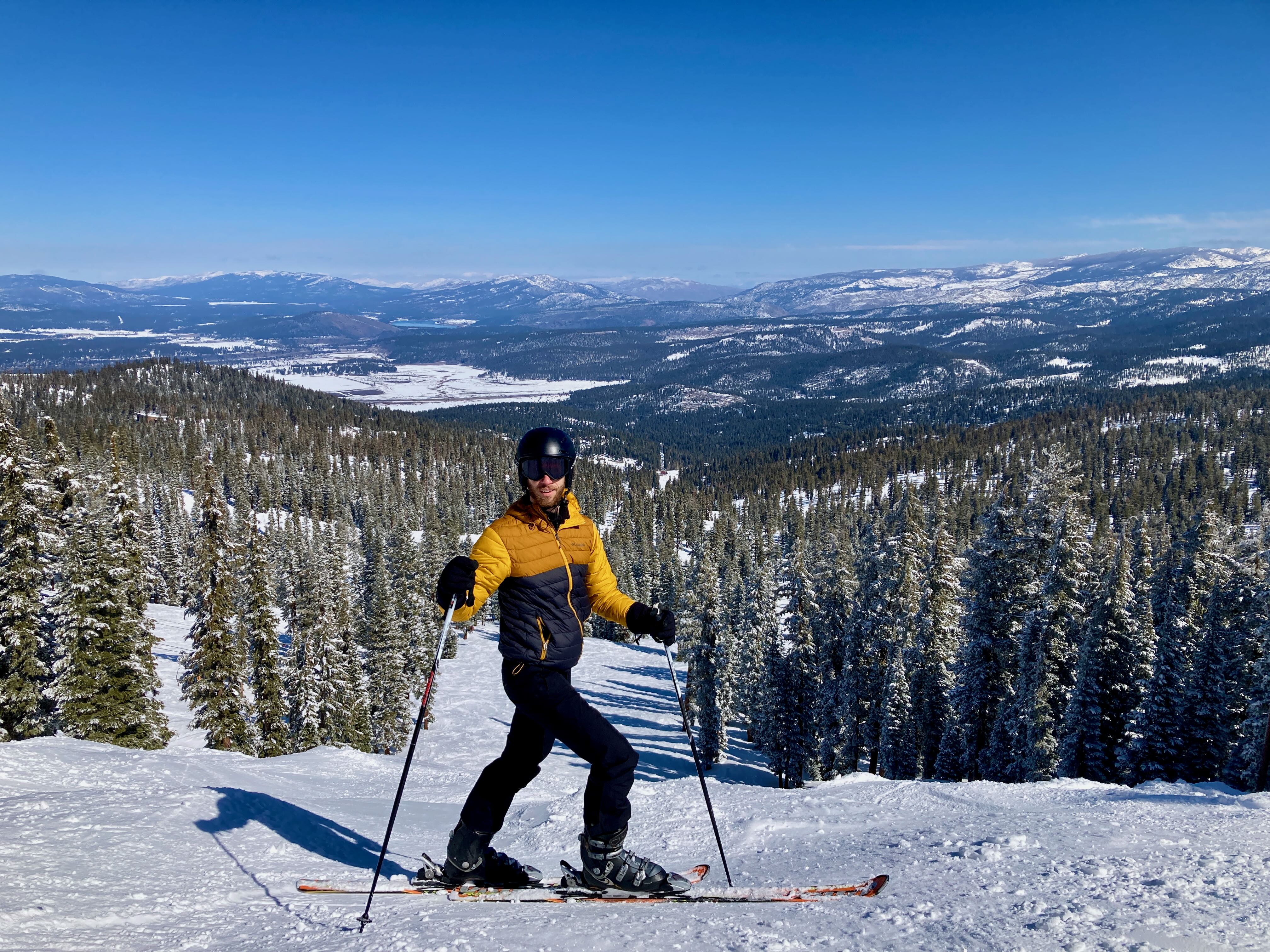
Skiing at Lake Tahoe
© Privat
DFG: For many people, the word boarding school instantly conjures up associations of Harry Potter or films such as the Dead Poet's Society, whose motto was carpe diem, or “seize the day” (or more broadly speaking, “make the most of your life!”) What’s it like to attend an institution like that where there's such an intense educational focus?
NJ: There are generally a lot of prejudices about boarding schools. Unfortunately, these tend to be less about Hogwarts and more about other extremes, like homes for difficult children or places where rich parents deposit their kids so they don’t have to look after them themselves. But in the vast majority of cases the reality is quite different. At St. Blasien – a beautiful former Benedictine monastery in the south of the Black Forest – the educational environment was ideal: highly motivated teachers, regular times for study, even Saturday classes. I was rather critical of the latter at the time, of course. There were also lots of extra-curricular activities, including plenty of sports and music. All of this was imbued with Jesuit Christian values, where not only academic achievement was important but also the formation of character. Boarding school is a great place to learn how a community works. There’s nothing better than being with your closest friends around the clock, sharing experiences and testing your limits. But that closeness can be a challenge, too – it’s not uncommon to self-destruct at times! Laughing and crying together – that brings people together of course, creating a kind of extended family. I’ve maintained lots of friendships from back then and the witnesses at my wedding were St. Blasien alumni, too.
DFG: After graduating from upper secondary school and studying at the Medical University of Vienna, you went to Ulm University Hospital to complete your further training as a hemato-oncologist? Why cancer?
NJ: Cancer is “evolution in a nutshell,” which is what makes it so fascinating biologically. Every tumour originates from a single cell, which usually acquires a genetic modification by pure chance that gives it an advantage over healthy cells in terms of growth and survival. This then divides into daughter cells that compete with each other for limited resources such as nutrients or oxygen. But they are also subject to other external factors, such as the microenvironment, the immune system attacking the tumour cells, and of course therapies when the cancer is treated. This constant selection pressure according to Darwin’s model requires and promotes constant adaptation as a result of new genetic changes. Many people imagine cancer to be relatively homogeneous. But in fact, the selection from the original tumour produces new clones – whether simultaneously or subject to a time lag – with sometimes completely different and new characteristics. In the case of a prostate carcinoma in the same person, for example, a bone metastasis may only be distantly related to a brain metastasis present at the same time: i.e., a second cousin rather than a sister. Unfortunately, it’s not uncommon to see metastases responding very differently to the same therapy. This is what makes understanding tumour evolution so essential and intriguing in terms of the development of novel therapeutic concepts.
In addition, oncology could not be more relevant at the present time: on the one hand, we have a demographically ageing society, which means an increase in patients with cancer. At the same time, the sector is seeing an innovation boom, such as technological leaps (such as high-throughput sequencing and CRISPR/Cas-based gene scissors) that serve to understand and model disease, as well as novel therapies with targeted so-called ‘small molecules’, or immunotherapies like checkpoint inhibitors or CAR-T cells. I remember that not so long ago, therapy studies were having to deal more with things like dosages, interval durations and combinations of cytostatics – in other words, things with very incremental improvements. Now, suddenly, we’re seeing disruptive, innovative approaches again. Of course, there are fresh challenges, too, such as the question of ethical and moral guidelines in the use of certain therapies or the issue of the distribution of resources. All in all, there’s still a long way to go, of course, but I already sense a new optimism.
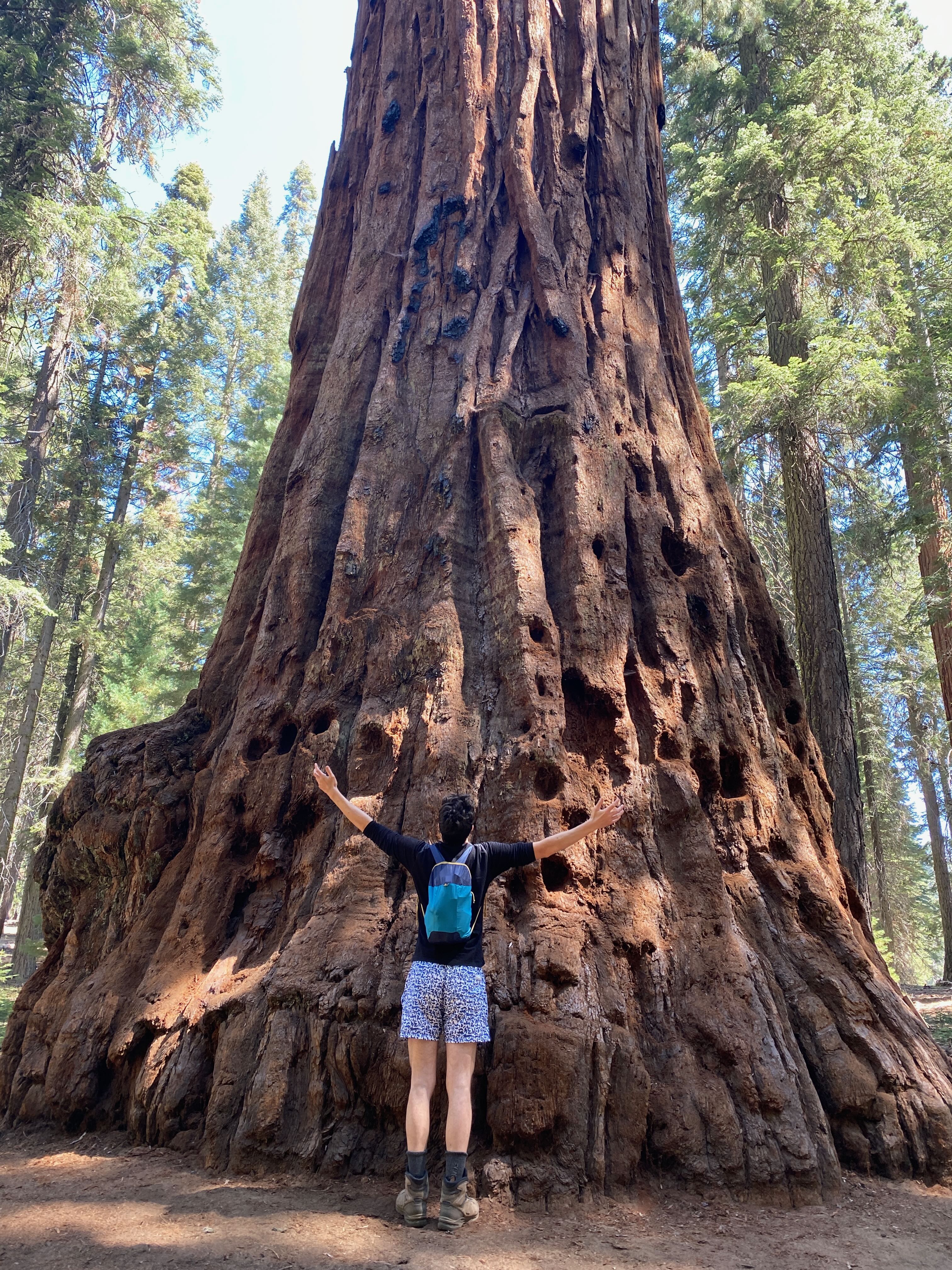
In front of a giant sequoia in the national park of the same name
© Privat
DFG: Let’s talk about your career. Professor Jaiswal and Professor Benjamin Ebert, in their paper on clonal changes in human hematopoietic cells published in Science in late 2019, say: “Time is not a friend to our DNA.” Of course we don’t like to hear that someone or something is not our friend, but can we at least draw therapeutic insights from this bad news?
NJ: Not yet. But the essential idea here is the realization that although we inherit our genetic code at birth, it is dynamic and changes selectively as we age. The term somatic mosaicism has become established for this process of constant change and the emergence of distinct cell populations in our body through new genetic changes. Sometimes the most important manifestation of this is to be found in the blood, a phenomenon we call CHIP. In the longer term, CHIP can be the cause of a variety of different diseases and is associated with increased mortality. This paradigm is something akin to a biological revolution.
DFG: And when a revolution breaks out, the first thing a German does is step on the brakes, right?
NJ: Not only that – and not only the Germans. But let me address one aspect of this revolution that I regard as key: namely, the CHIP phenomenon just mentioned. It stands for “Clonal Hematopoiesis of Indeterminate Potential” and this is what it means: humans have about 200,000 so-called blood stem cells – cells that are responsible for blood formation (hematopoiesis). Over time, mutations occur in these cells purely by chance: the longer the time, the higher the number of mutations. Many of them remain inconsequential, but sometimes they result in an evolutionary advantage for the mutated blood stem cell – and that is not without its problems. In such cases, this results in the cell expanding disproportionately, and at some point, a majority of all blood cells go back to this one originally mutated cell – hence clonal hematopoiesis. Today we know that about one in five people over the age of 70 is affected. As CHIP is a precancerous condition, anyone who has it is also subject to a slightly increased risk of developing blood cancer. Things are fairly clear up to that point. But what surprised us quite a bit at first was the fact that the increased mortality risk in CHIP is not due to blood cancer; it is mainly a result of cardiovascular disease – i.e., heart attacks or strokes. In fact, studies have now been able to show mechanistically that the mutated blood stem cells can give rise to disturbed, overactive immune cells that promote atherosclerosis in blood vessels.
The distinctive property of blood is that, unlike other organs, it knows no spatial boundaries. In the case of CHIP, this has far-reaching implications. We are slowly beginning to understand the first possible links with other diseases of old age, such as Alzheimer’s and type 2 diabetes. CHIP shows how closely everything in an organism is intertwined. If we were able to identify the relevant mechanisms in each case, we could intervene therapeutically and preventatively, i.e., before the symptoms even occur. It is this potential, which goes far beyond oncology, that makes the experts rave about a “revolution”.
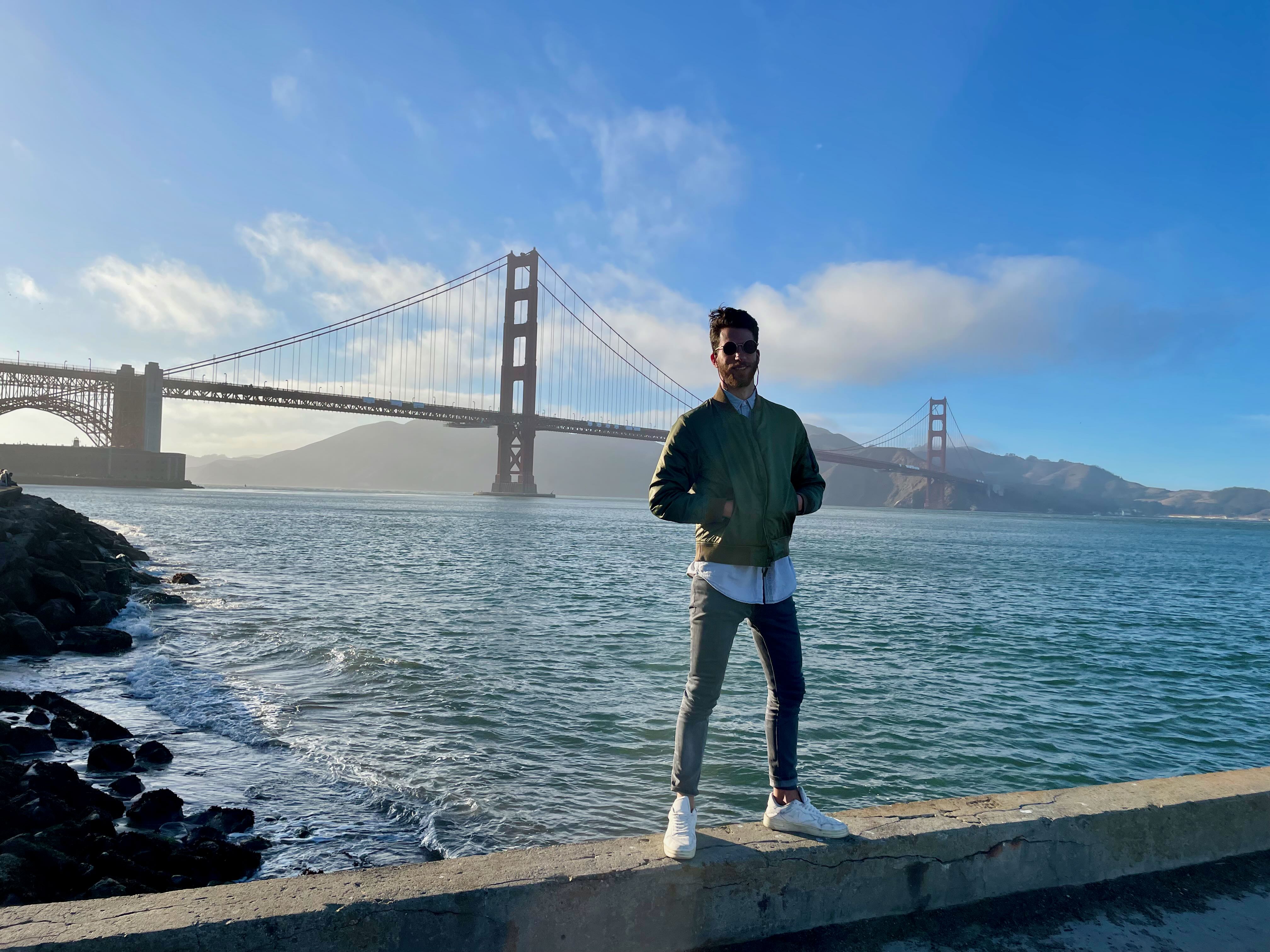
In front of the Golden Gate Bridge
© Privat
DFG: Realistically speaking, what are the chances of success?
NJ: I can’t give you a realistic view – I’m too involved for that. But I can refer you to the judgement of those who are ”betting” on the success of this revolution financially. As with every revolution, this one also involves several minds. In terms of my own field, apart from Sidd Jaiswal, these are mainly Alex Bick of Vanderbilt University, and Benjamin Ebert and Pradeep Natarajan of Harvard Medical School – to name just a few. The chances are quite high that you will find one or more of the latter among the winners of prestigious international awards over the next ten years. In the shorter term, looking at a five-year horizon, opportunities can also be seen in the sums of venture capital accumulating behind new scientific discoveries and the minds associated with them. That’s a pretty good indication of how ground-breaking the progress in knowledge is considered to be – from an economic perspective, too.
DFG: But venture capital is also prone to failure and even fraud, as we saw most recently in the case of Elizabeth Holmes. How do you deal with that?
NJ: Ms. Holmes, the founder of Theranos, was able to raise a lot of money for a business idea that might seem promising or even revolutionary to a non-expert; that is, to be able to carry out all relevant blood tests quickly, cheaply, and conveniently on a single drop of blood. As far as I know, there were a lot of experts who viewed this with great skepticism from the very outset. But generally speaking, the desire to be part of the next big thing was probably so great that people were blind to all the red flags. Everyone is always wiser after the event of course. In any case, that seems to have been the fundamental problem rather than the venture capital culture of Silicon Valley as a whole. Venture capital doesn’t mean blind capital, like the money collected at lottery booths. There should be enough expertise in the companies that at the end of the day, not all the money gets wasted and there are a few ideas and start-ups left over from the portfolio of various risks that make the venture capital (VC) fund as a whole viable and even profitable. And as mentioned earlier, the minds being invested in are a very important aspect of this kind of decision. These are people with a track record like Jaiswal and Ebert – people who know each other from Harvard and who have now raised $40 million in the first VC round (Series A) for a newly founded company called “TenSixteen Bio” based on their ground-breaking findings. That is in itself a very clear vote of confidence on the part of venture capitalists familiar with life sciences, indicating that these findings will lead to marketable therapies within, say, five years. There will be additional VC rounds before then: after all, “bench to bedside” – that is, turning new insights into therapies and diagnostic procedures that serve patients – is a long and complex process. But $40 million in the first round of funding is already a clear sign of confidence.
DFG: Would that be possible in Germany, too? To put it another way, what is it about the climate in the USA that enables leading minds there to create spin-off companies more quickly and successfully than in Germany, which also has outstanding scientists?
NJ: If it were only a matter of better weather, Boston/Cambridge would be in the same league as Bonn or Heidelberg, while Stanford and the Bay Area in sunny California would be in a different class. What we should be talking about is the climate in places where knowledge is generated, the international flair at the labs, the interdisciplinary nature of the work, the optimism, the enthusiasm and the fact that the hierarchies are probably flatter. People flock to Stanford from all over the world, all of them united in the desire to pursue research and education at the very highest level, and to make a difference, too. And Stanford is part of the unique Silicon Valley ecosystem, made up of universities and research institutions, start-ups, industry and tech giants, capital providers and other supporting institutions, where people come together and cross-fertilize.
As far as turning ideas or research findings into products is concerned, Stanford University – presumably like all the other top universities in the USA – has programs that aim to help people do this in an entrepreneurial way. For example, there’s an accelerator with the promising name “Spark,” which supports innovative medical ideas by providing money and a lot of know-how for start-up entrepreneurs so that things can be swiftly put into practice. And there’s also a program called “Ignite,” which I was involved in myself. It’s aimed at people without a background in business administration - academics like me - and teaches the basics of entrepreneurship, both theoretically and entirely hands-on. Over a period of three months, small groups develop concrete business ideas based on research findings or other ideas. This is backed up with various teaching modules on things like ideation, value proposition and accounting, and then there’s the final pitch to the investors. For example, I was in a small group led by an engineer from Stanford who, as part of his postdoc, developed a capsule that can be swallowed and collects biomarkers as it passes through the gastrointestinal tract to detect certain cancers at an early stage, without the hassle of gastrointestinal endoscopies. I’m not sure we'll see this on the shelf in the future, but that in itself offers an important insight: not every good idea results in a good product. Nevertheless, the economic exploitation machine keeps a close eye on what’s going on in the Ignite program, so this is by no means just an academic exercise.
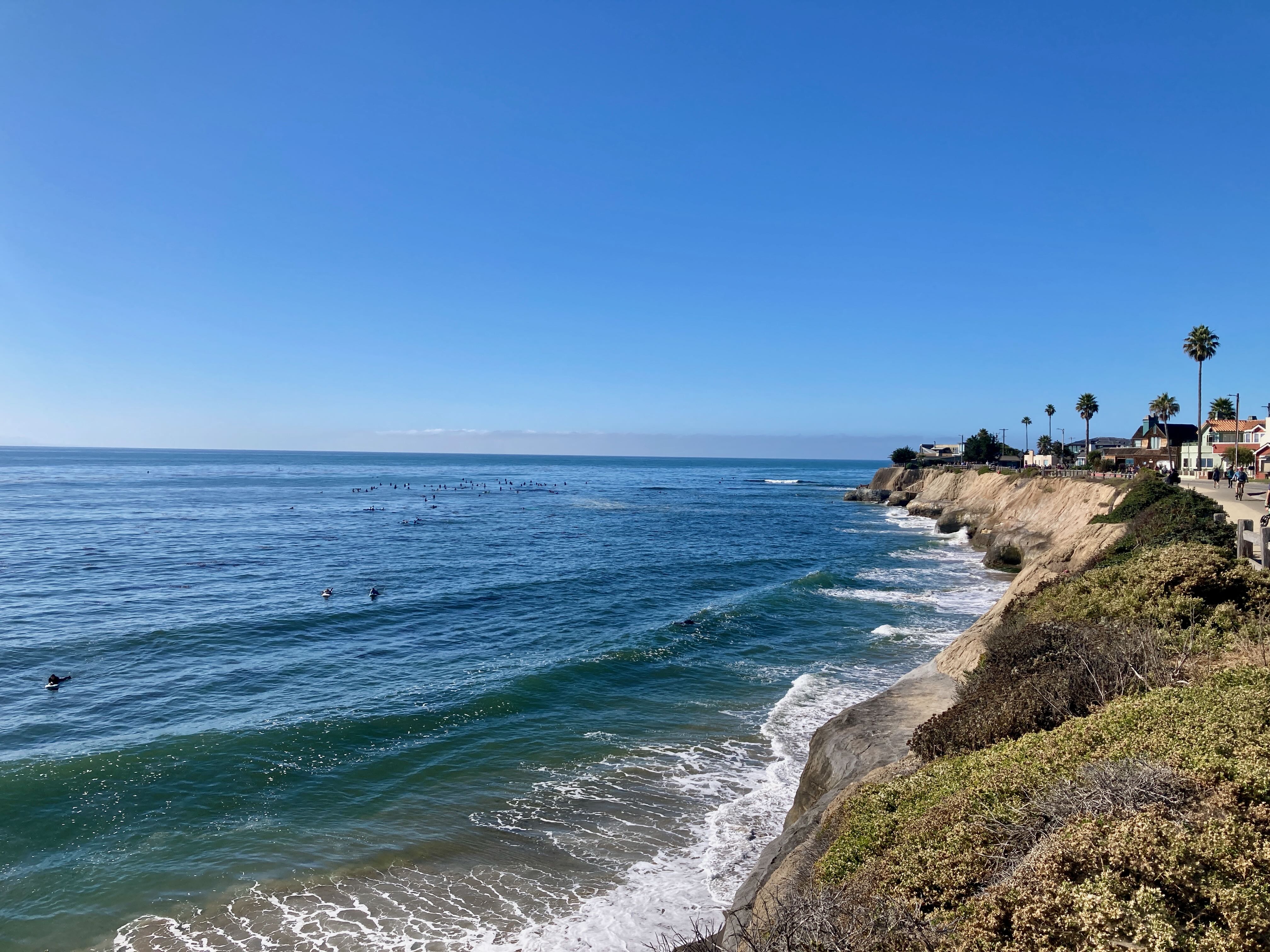
“Jack’s” surf spot in Santa Cruz
© Privat
DFG: Your research group leader seems to be an important source of inspiration too, is that right?
NJ: Yes, of course. Sidd Jaiswal is at an almost scary scientific level on the one hand, yet he’s extremely generous, approachable, and bubbling over with ideas. I meet him at least once a week, and when I tell him about my progress or failures, he always advises me to “have a chat with so-and-so” or “give this or that a try.” This openness also extends to mentoring, like the career advice he gives me. There’s no one ideal route that rules out everything else from the outset. The typical German “yes, but ...” seems to be largely unknown in this country; you’re more likely to hear “yes, and ...”. As Germans, we tend to encounter this refreshing openness with a little more skepticism, and we find it downright ridiculous that all pre-school children – at least those attending daycare centers that cost between $30,000 and $50,000 a year – really are regarded as “future leaders,” or that “fake it till you make it” appears to be a viable life plan (see Elizabeth Holmes). But the idea that there are no losers, only winners and learners – naive, rose-spectacled optimism from a German perspective – certainly has a certain charm of its own and is very encouraging. Of course, if a person learns absolutely nothing from setbacks, the ”loser” image will stick at some point, but contrary to all evidence, people in the optimistic regions of the USA doubt that such a thing even exists.
DFG: You seem undecided. Where do you see yourself in five years from now?
NJ: That question is both pressing and difficult for me to answer at the moment. My current life here in California couldn’t be better: My research is absolutely fascinating and productive. The country and its scenery are beautiful and the milieu I move in is enriching. My wife and I enjoy that very much. My preferred option would be to freeze everything at the status quo. But even paradise gets boring over time, of course. Here I am looking into the processes of ageing with CHIP, and my 102-year-old grandmother is still alive and well in Düsseldorf. I talk to her regularly on the phone, and she gives me a summary of what’s in the Rheinische Post every time. She’s still very fit and I do rather miss her here in California, as I do my parents, my siblings and my friends. So what about my further planning? One thing is certain: I’m passionate about the life sciences. There is a wide range of options: on the one hand, the path as an oncologist in academic research, which would be a very obvious one for me to pursue of course – that would involve going for a research group leadership and a professorship. But there are a number of other opportunities, too: from setting up my own spin-off, which everyone encourages you to do here at Stanford, to consulting work in the life sciences or at VC companies. Let’s see – ultimately, it’s coincidence and opportunity that decide the way forward, whether in your private or professional life.
DFG: And what else can you tell us about what you do?
NJ: If I get up at five a.m., I can easily make it to the beach in Santa Cruz in an hour. Then it’s out to sea, lying on the surfboard and paddling with your hands, to the places where you can catch waves, and then you turn around and wait. There are dolphins swimming to the left and right, and the view back to the shore takes on a strange, almost existential feel – especially in the morning light. Waiting has something meditative about it, and when it’s interrupted by a suitable wave, everything suddenly happens very quickly. I wasn’t born and raised on a board (like a lot of people here on the coast of California), so I’m probably not the prime example of elegance, but I’m getting good at standing up and I’ve managed one or two turns on the board, too. I’m a little envious when I watch the veterans with their sun-tanned skin passing me to the left and right, occasionally with a fat belly but always demonstrating lots of technique and finesse on their boards as they glide towards the beach. At my current level, I’m back in the water again very quickly most of the time. That’s good for your back and shoulder muscles – and for your sense of composure, too. But the hour on the water is worth it even without catching a wave: I’m then very refreshed when I get to the lab between 9 and 10 a.m. – and the prevailing optimism there makes me believe in my progress on the surfboard after all.
DFG: Aren’t you afraid of sharks?
NJ: You watch too much Shark Week. I’m almost certain that driving to the beach is statistically more dangerous than surfing. I’d recommend surfing to anyone. As I said, it not only trains muscles, it’s also a wonderful exercise in self-composure.
DFG: In that case, we very much hope this composure will translate into excellent progress in your research project and that you’ll be able to make a real difference with your research findings and your experience at Stanford University, beyond simply advancing knowledge. We also hope that, in one way or another, you will be of service to Germany as a center of research and innovation in the future. Thank you very much for this interview and all the very best for your future.